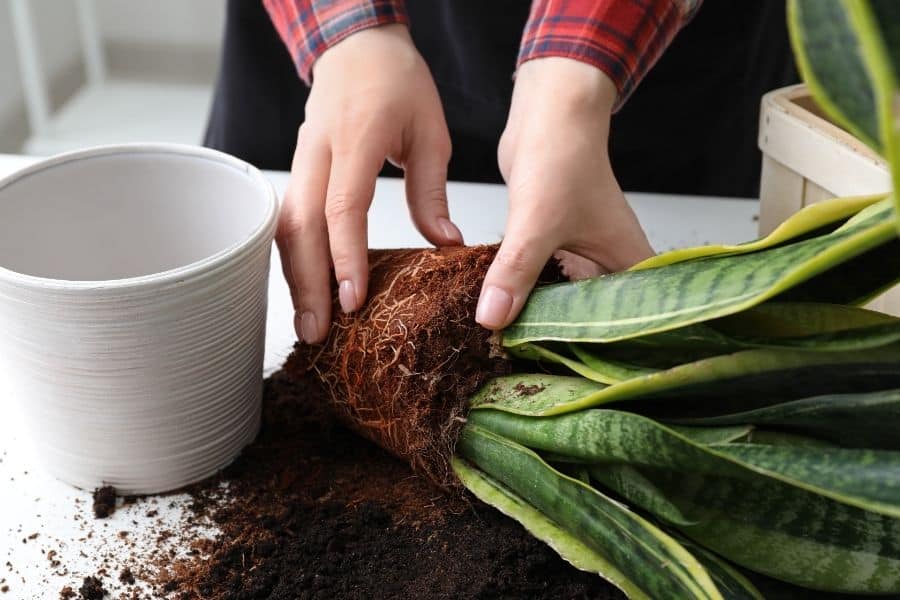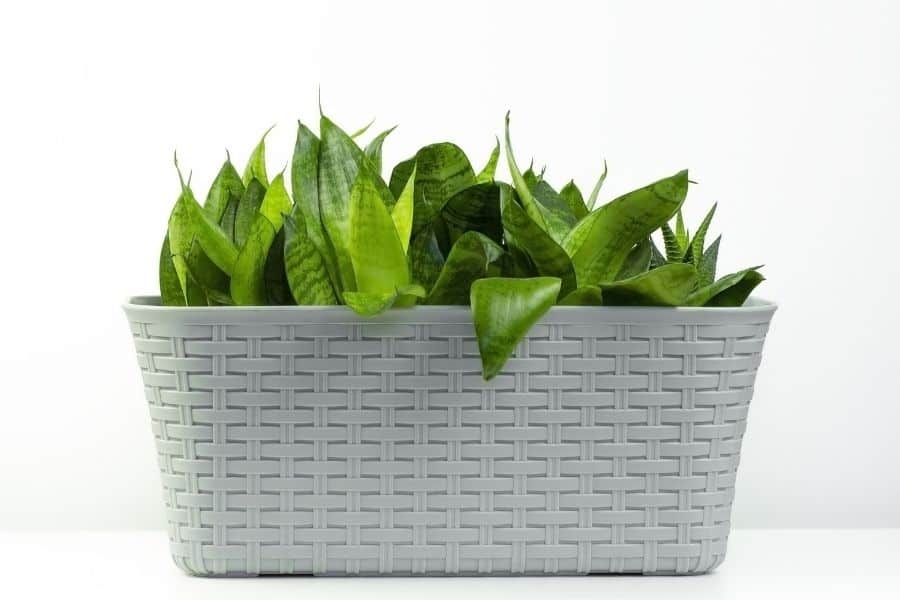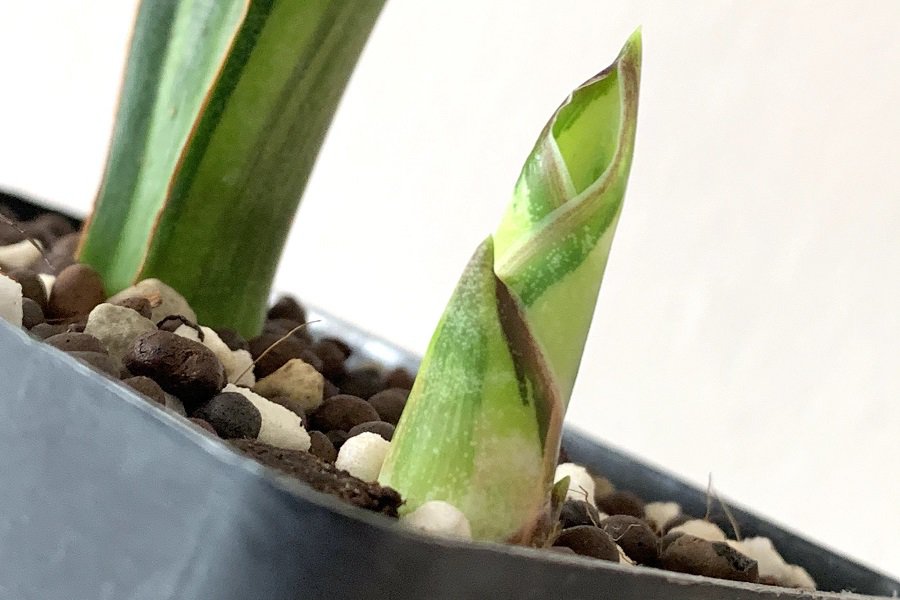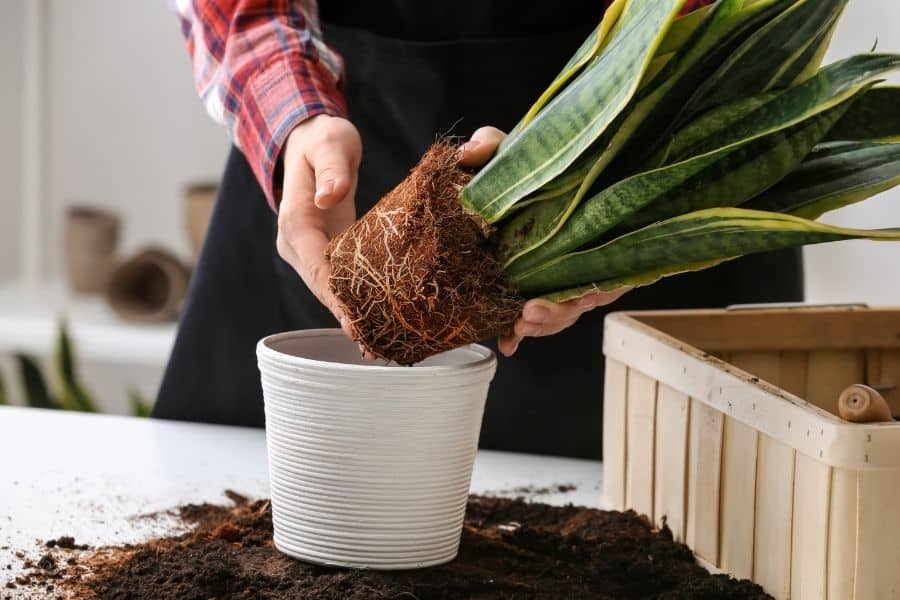Dividing Snake Plants: A Gardener’s Guide
Snake plants are distinct and hardy plants to have in one’s home. They are slow growers at first, but you will be rewarded with several pups or baby plants that you can cut out and plant separately. The following is a beginner’s guide on how to divide snake plants.
Contents
How to Separate Snake Plants

Separating a snake plant is not too big a task, provided you know how to use the required tools and pick the right season to do it. Late winter or early spring is the perfect time to separate the plants.
All you need is a pair of secateurs and gardening gloves. Simply ease the plant out of the pot. You can do that by wetting the soil and easing the plant out. You can also try to carefully remove half the soil from the pot and slowly nudge the plant out. Be careful while doing this as you do not want to exert pressure or forcibly pull the plant out. Take your time while removing it from the pot by slowly nudging it out. You do not want to damage the whole plant only to separate a pup for replanting.
Once the plant is out, use spare newspapers to clean out the soil so that you can see the roots. Look for the rhizomes, which are the thick tube-like pieces where the leaves connect and different offshoots emerge.
Take the secateurs and carefully make incisions in the middle of the two shoots you want to separate. Ensure that you get a good amount of roots on the shoot that you have separated and want to replant. This will aid in its healthy growth. To make it easier, you can find the Mother-in-law’s tongue variety which grows even with just the leaf sans the roots.
Did you know that there are about 70 varieties of snake plants that you can grow indoors? But there are 20 must-have varieties you won’t be able to resist if you’re a certified snake plant lover. If you want to know about them, discover different types of sansevieria hahnii here.
Do Snake Plants Like to Be Crowded?

Snake plants grow perfectly fine when they are in a crowded ecosystem. In fact, to some extent, they even thrive in a crowded root system. When you think the plants are getting too crowded, you can always cut them at the rhizomes and separate the plants to propagate them into different pots.
You will know it is time to repot the plant when you can see the roots peeking through the drainage holes at the bottom of the pot. Unless that happens, you do not need to worry about whether a snake plant needs to be repotted, so there is enough space for new pups to grow. A crowded root system is not what will cause a snake plant’s growth to stagnate. Instead, it is poor nutrition, low light, and over or underwatering that affect its health.
A slightly crowded pot of tall Sansevieria Futura Robusta is better so the leaves can stand firm and not lose their strength and lay limp on the side. Getting them bunched together gives them a more formidable height, and they kind of support each other.
Do You Need to Water Snake Plants after Repotting?

Snake plants typically do not require too much water. If you have wet the soil right before taking the plant out to cut and separate it, you do not need to water it after repotting. In fact, watering the plant after repotting will only cause the water to accumulate at the bottom, which in turn, is not good for the roots.
Let the soil drain for a few days and keep the pot out of direct sunlight. Even if you feel the surface of the soil is dry, do not be tempted to water the plant as the inside of the soil is still moist. Wait for a day or two after repotting the plant before you water it.
This is not a high-maintenance plant. It asks for very little, but if you can take care of those minute details, the plant will thrive without any trouble. Ensure it is getting the right amount of sunlight and water, without overdoing either or depriving the plant of either.
Watering the snake plant after repotting while the soil is still moist is not ideal because the roots may rot. When the roots of the snake plants rot, you may still save them by cutting the affected portion. Though it would be better to avoid rotting the roots, so hold back on watering.
How Long Does It Take a Snake Plant Pup to Grow?

Snake plants take a while to grow but the beauty is that they can easily be propagated and you can have multiple snake plants growing out of a single mother in no time. The root growth alone may take 6 to 8 weeks, so you will have to wait at least that long before you can separate the plants. Even after that period, it is best to allow the plant to establish its roots and have a few new pups growing before you remove them and divide the rhizomes.
However, once the plant has grown, it is easy to separate the pups away from the mother plant and grow them in different pots. At times, when you transplant a pup, its growth may stagnate or you may not see any movement for a few days. Sometimes it means that the pup is planting stronger roots in the soil, which is why you cannot see much growth above the soil.
As long as the leaves are green, not yellow, and you are providing the snake plant with all the optimal conditions for proper growth, you just have to wait it out so the pup can become more comfortable in its new home.
Do Snake Plants Like to Be Root Bound?

Snake plants certainly like to be root bound so repotting them frequently is not such a great idea. If you keep taking the plant out to separate it and to create more space for new pups to grow, you will also be putting the plant through some trauma as it prefers to be root-bound.
Even if you see a new pup growing, you do not need to make more space for it. Snake plants also like to be crowded to the point there is no room left in the pot for new ones to grow. As mentioned above, you will know when it is time for the snake plant to be repotted when you can see the roots peeking out of the drainage holes at the bottom of the plant.
Until then, try not to disturb the plant unless you want to separate a cutting for repotting. While it is extremely easy to separate snake plants and grow new ones in different pots, it is best to leave the plant by itself at least for a few years so it can establish strong roots and have healthy growth.
Read also:
Can You Plant Different Types Of Snake Plants Together?
Many plant enthusiasts grew crazy with snake plants over the past few years because of their minimal care needs and the many benefits they provide in the home. Aside from making the home pretty, they clean and purify the air, which is a good thing for your entire family.
